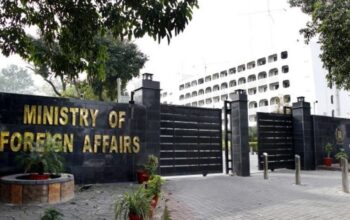By Staff Reporter
ISLAMABAD: Three-Year Rolling Growth Strategy, a brainchild of the PTI government, evolved to reorient policies and incentive structures for the private sector, is on Shehbaz regime’s kill list.
The plan was orphaned after the PTI government was de-seated overnight through a vote of no confidence against former prime minister Imran Khan.
The fate of the National Development Framework (NDF), another orphaned scheme, also hangs in the balance for its association with the former government and no one wants to adopt such an important document.
Under the prepared supervision of the former DCPC, the Planning Commission recommended abandoning all provincial nature projects from the list of Public Sector Development Program (PSDP).
According to Planning Commission estimates, the former government had allocated Rs114 billion for various such projects for the current fiscal year.
The overall cost of provincial nature projects went up close to Rs 400 billion. With total throw-forward escalating to over Rs8 trillion for the completion of over 1,168 development schemes falling in the PSDP list. One World Bank (WB) study showed there were projects in the PSDP, which could not be completed in the next 50 years keeping in view existing allocation of funds on a per annum basis.
The newly prepared growth strategy hinges upon three major pillars that are: growth engines must be tradable, globally competitive, job intensive, and help Pakistan move to a higher value-added structure of the economy. Second, the fiscal incentives need to be redesigned and made contingent upon eligibility criteria and export performance and with sunset clauses. Third, it asks to leverage relationship with China in particular, and gain share of higher value-added products in its import market
With the resignation of Deputy Chairman Planning Commission (DCPC) Dr Mohammad Jehanzeb Khan, who was the main architect of the Three-Year Rolling Growth Strategy, the chances of its implementation have almost diminished.
Former Prime Minister Imran Khan had received a detailed briefing from Ministry of Planning high-ups before his ouster had directed them to get approval on growth strategy from the National Economic Council (NEC) and get it complemented from the next budget for 2022-23.
“Now there is no ownership on this strategy and so it might be abandoned,” said one senior government official.
The strategy was aimed at sustainable acceleration of economic growth and to raise per capita incomes, without creating an external account crisis.
This growth strategy is based upon seven pillars investment reforms.
Investment reforms: Policies to incentivize efficiency-seeking domestic and foreign investments.
Industrial reforms: To reduce policy-induced distortions and re-orient incentivisation policies to reward productivity gains & resource allocations towards export sectors.
Agriculture sector reforms: Targeted productivity improvements & supportive measures to enhance agriculture sector exports.
Higher value-added export of products: Harnessing R&D capabilities/defense spillovers.
Higher value-added export of services: Facilitation measures for enhanced IT export.
Strategic trade policy: Policy measures aimed at improving market access, diversification, branding, and compliance with international social & environmental standards.
Raising National Savings rate: Inter-provincial augmentation on population control programme.
Copyright © 2021 Independent Pakistan | All rights reserved




